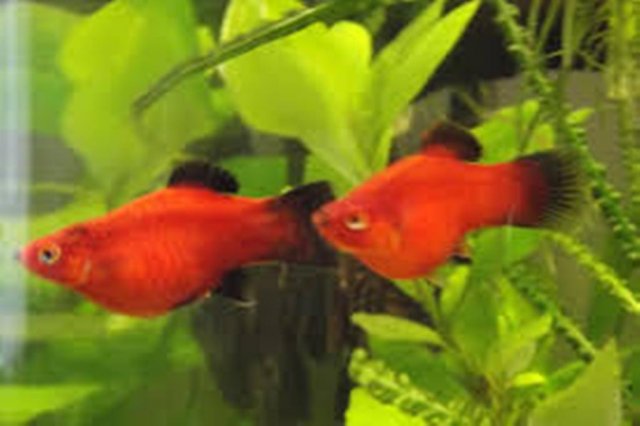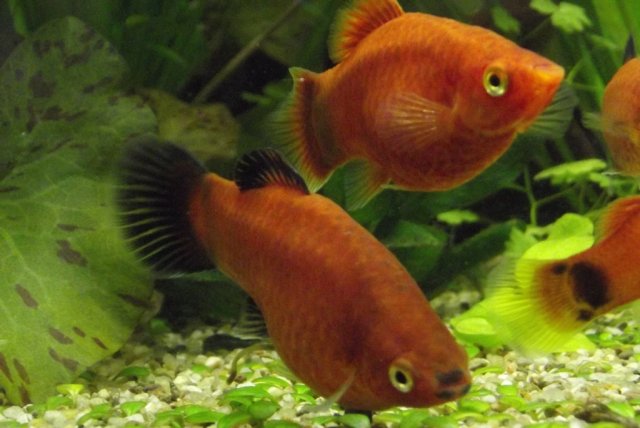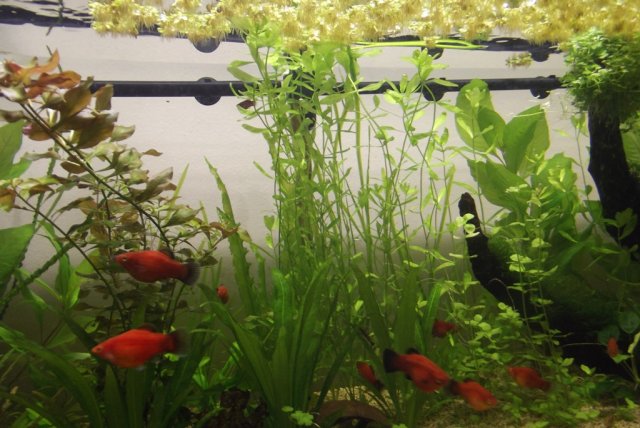Shall I go back and quote all your "good intentions" you've had towards me over the years I've been an active member?If you truly believe i was trying to start some argument, i was not.
Why we test (after a cycle is done)
- Thread starter duanes
- Start date
Hello; I have raised fish from eggs many times over the decades. Most recently some common angel cichlids. I started the eggs out in a 15 gallon tank with about only five gallons of water. I found I had to take the leaf the eggs were on from the parents or they would eat them. So into the partly filled 15 gallon with an airstone bubbler near for some circulation. Also some methelene blue to cut down on fungus.Growing out a fish in a tank too small to support its growth in bioload is either lack of experience on behalf of the fishkeeper or total disregard for the well being of the fish.
As the eggs began to hatch out and the fry started to feed I was able to add water for the first few days so to dilute things such as nitrate until the fry got some size. I was able to triple the water volume by the time the 15 was full and then I had a screened attachment for a hose to start WC's. ( note- ammonia was not an issue as I also run a mature sponge filter in such a growout setup. Also some fry will graze on a mature sponge filter, especially kribensis.)
As the fry grow I move the survivors to a larger tank for a while. I usually have some % of fry loss so what size the next tank may be can vary. I was lucky in that a couple of area fish shops were willing to take my angels at about quarter sized. I wound up keeping five of the fry who were runts or had a bent dorsal fin alone in a 55 gallon. I will keep them now for life.
My point being I see no point in starting the 50 or so fry off in a tank big enough to hold say 50+ mature angel fish. I also get there are other growout scenarios. For example my angel parents were bought as small juveniles that I was able to keep in a 29 gallon for some months. I did have a larger tank on hand and in mind for the pair for when they got some size on them which they did eventually go into.
Hello; I am a bit lost with this comment. Ammonia and nitrite control is, to my way of thinking, more dependent on a suitable population of the beneficial bacteria (bb) than on a specific tank size. While I no longer over stock my tanks I can picture ways to give the bb plenty of surface area to colonize in even smaller sized tanks. The problem I picture with undersized tanks or overstocked tanks is the buildup of nitrates and other stuff we cannot for now easily test for. I actually count on the water change (WC) to help with that.You can't actually grow a fish properly if its subjected to the odd ammonia and nitrite spikes
Hello; Maybe not "remedy" exactly but I sure do use WC if I see ammonia spikes. I have four established tanks running right now so can rob from one of those for bb if needed. I also keep some sponge bases in my filter bodies for quick seeding of a tank.Ammonia levels higher than the amount the tank can support are not something one can remedy with water changes.
I dont know what point you are trying to make, ive done this with other fish besides bichirs and have no issues. Countless members use grow out tanks. Theres a whole section of people that would love to debate sizes and growth rates of endlicheri with you. Even a 30 inch fish starts out earthworm size. No need to keep the fish in a tank that would suit its mature size as long as you have the means to upgrade when the time comes.Yes, not uncommon.....but not something I would have done although you had the advantage of trying it with a fish known to be quite hardy. It's full potential though is yet to be achieved. See maximum growth rate below.
View attachment 1365052
Polypterus endlicheri endlicheri (Saddled Bichir) — Seriously Fish
seriouslyfish.com
You can do that if you like. You can create a whiole thread dedicated to the subject or realize that we dont like each other no big deal but not every post we make on the same thread is meant to start an arguement.Shall I go back and quote all your "good intentions" you've had towards me over the years I've been an active member?
I am not sure why you are confused but I'll elaborate further. Beneficial bacteria oxidizes ammonia to nitrite and nitrite to nitrate using oxygen. Now tell me, which tank has more oxygen, the 15G grow out tank or the 100G grow out tank? Oxygen is the biggest limitation to efficient nitrification and in general oxygen is typically scarce in overstocked tanks. Tanks low on oxygen develop a different set of microfauna and micro-organisms, promoting potentially pathogenic organisms. Also, which tank dilutes ammonia better, the 15G or the 100G?Hello; I am a bit lost with this comment. Ammonia and nitrite control is, to my way of thinking, more dependent on a suitable population of the beneficial bacteria (bb) than on a specific tank size.
Additionally, the acidifying effect of heavy nitrification in overstocked tanks will have a further negative effect eventually not just due to fast depletion of oxygen but due to fast total dissolved solids accumulation, depletion of total carbonate hardness, you name it......You get that pH crash effect @
Yes, me too. I raised livebrearers and corydoras more recently and I started them in 15G and 20G and then moved them on to a cycled empty 100G and 120G. They are not potentially 18 inch fish...Hello; I have raised fish from eggs many times over the decades. Most recently some common angel cichlids.
The % fry loss is very much dependent on the water quality.I usually have some % of fry loss so what size the next tank may be can vary. I was lucky in that a couple of area fish shops were willing to take my angels at about quarter sized.
Whether you see the point or not, you would have had way better quality juveniles if you did raise them in a sufficient tank size.My point being I see no point in starting the 50 or so fry off in a tank big enough to hold say 50+ mature angel fish.
The method of raising fry is the difference between getting quality juveniles and sickly juveniles when you buy fish from breeders or fish shops. That's why I like raising my own fish and I buy them as small as I can find them.
For your reference the below are a mother and daughter platy, one is about 4 years old on the picture, the other nearly 5 years and they were raised in a 100G. Tell me when you see a platy that size around...They're historically kept in 20G tanks and never grow to full potential. I measured one at 3.5 inches once.

Last edited:
lol I thought I was the only one lostI honestly have no idea what you are talking about. Why are assuming anything about subjecting the fish to ammonia ?
Its a common practice experienced keepers use quite often.
Moving established media from a cycled tank to a cycled tank will achieve nothing because relatively small amount of media can grow large populations of BB in the presence of sufficient oxygen. The only way to improve nitrification in a problematic tank cycled tank is to increase oxygen and that employs more water movement, less bioload, larger tanks, addition of plants, etc..Moving media around will have zero effect...As for ammonia spikes, as I said above, it is unacceptable to me if I care for the fish's long term health....I'd not give away fish that were raised in a tank spiking with ammonia every so often. They're guaranteed to be "sensitive" individuals.Maybe not "remedy" exactly but I sure do use WC if I see ammonia spikes. I have four established tanks running right now so can rob from one of those for bb if needed.
Bichirs live up to 20 years and more. How old are yours that you are so sure about what you've done is right? Having said that, I've seen your tanks and they are well kept.I dont know what point you are trying to make, ive done this with other fish besides bichirs and have no issues.
My point was about keeping fish in insufficient size tanks...
I agree.You can do that if you like. You can create a whiole thread dedicated to the subject or realize that we dont like each other no big deal but not every post we make on the same thread is meant to start an arguement.
Again, not sure what the confusion is about, maybe because of lack of experience or lack of understanding of water chemistry? Ammonia is in a tank 24/7 mate. Nitrification has consequences larger than build up of nitrates...I am honestly tired of repeating myself. Good luck with your fish keeping. I am glad it works for you well enough.lol I thought I was the only one lost
That's the entire point of these discussions, to raise a point, even if it is not immediately assimilated, it may stick eventually.
See more of my platies raised in large tanks. That's a 5f 100G tank and the largest fish is a pleco which is now in a 240G pond.For your reference the below are a mother and daughter platy, one is about 4 years old on the picture, the other nearly 5 years and they were raised in a 100G. Tell me when you see a platy that size around...They're historically kept in 20G tanks and never grow to full potential. I measured one at 3.5 inches once.


You cant determine this unless the tank size is infact too small or there is a lack of oxygen in skj's example none of these are mentioned. One scenario is the fish is in an adequate sized tank. The fish has grown and the the bio load surpasses the amount of media for bb to colonize. Adding additional established media solves ammonia and nitrite issues - more surface area more bb. Even if the tank is too small or over crowed additional media will control ammonia/nitrite.Moving established media from a cycled tank to a cycled tank will achieve nothing because relatively small amount of media can grow large populations of BB in the presence of sufficient oxygen. The only way to improve nitrification in a problematic tank cycled tank is to increase oxygen and that employs more water movement, less bioload, larger tanks, addition of plants, etc..Moving media around will have zero effect...As for ammonia spikes, as I said above, it is unacceptable to me if I care for the fish's long term health....I'd not give away fish that were raised in a tank spiking with ammonia every so often. They're guaranteed to be "sensitive" individuals.
Guess it makes two of us lol.lol I thought I was the only one lost
I get that. Nothing you've stated about this fish cant be learned from the 1st link of a google search. There are members who unfortunately no longer openly post that have bichirs older than some members and have used grow out tanks. Not incredibly old by any stretch of the imagination maybe 4ish yrs old. So what your saying is my practice of keeping a fish in a tank smaller than required (grow out) and graduating him to larger tanks until its ready to join the group may be causing long term health issues ? Really because a few posts back you agreed that this is how you would handle new and smaller fish you-ve obtained . A little confused.Bichirs live up to 20 years and more. How old are yours that you are so sure about what you've done is right? Having said that, I've seen your tanks and they are well kept.
My point was about keeping fish in insufficient size tanks...
Maybe the confusion exists because NO ONE IS DISAGREEING WITH YOU. I mentioned grow out tanks being smaller than the tank needed for the life of the fish.... you took that as a way to imply disease and poor water quality was an issue. Of course they can....even in a large tank. Even a 30 inch fish can be obtained at earthworms sizes.Again, not sure what the confusion is about, maybe because of lack of experience or lack of understanding of water chemistry? Ammonia is in a tank 24/7 mate. Nitrification has consequences larger than build up of nitrates...I am honestly tired of repeating myself. Good luck with your fish keeping. I am glad it works for you well enough.
Wow, super experience level Duane!I get the impression that most aquarists know the gist of why we test our tank water during the initial aquariums cycle, for ammonia, nitrite, and nitrate, but not later on after the tank is humming along.
Beyond the cycle, the tests become just numbers, and some may not realize their significance.
Testing after the cycling is done, is important to help determine water change schedule, and amount of water we change.
We also test after adding more fish, or plants, because this can temporarily or permanently change our water change routine.
Most of the time, our "tap" water will be fairly consistent, if from a large lake, or well (although it may not if our water source is a river that changes, with the seasons, or is a well influenced by agriculture)
But our tap water controls all, so every aquarist should learn its parameters.
Testing before and after water changes is very important.
It is the difference between before and after, that is most telling if our water change routine is sufficient.
Every tank is different, so although there are generic rules out there, many may choose to follow about water changes, your tanks may be radically different (especially when trying to house monster fish)
Most of the water change rules, and filtration norms (manufacturer specs) are based on a community tank of a few tetras, an angel fish, and some cory cats, "not" on 6 oscars, or 2 stingrays, or an Arowana.
If the water in the tank has drastically different water parameters just before a water change, than after, it means out water change schedule is probably not adequate, and volume not enough.
If after a water change pH is 8, but before is 6, it means the time during between water changes has allowing the water to acidify with fish urine, or other metabolism by-products. So more frequent water changes are needed to bring those two pH numbers closer together.(8 before, 7.6 after, is reasonable)
If after a water change your nitrate reading is 5ppm, but "before the water change" it was 40ppm, it also means there has been too much time lapse between water changes, and not enough cleaning of filter media. A more reasonable difference might be 5ppm nitrate after, 15ppm before.
Adding new fish may also change our parameters, a neon or 2 may not make a bump, but a new 6 inch oscar can turn a tanks urine soup mix upside down and require a doubling in frequency of water changes and frequency.
Testing the difference in pH and nitrate soon after adding that oscar is like the canary in the coal mine, if pH drops significantly, or nitrate increase, from the norm, your new purchase has just forced a change in your routine.
The buffering capacity (alkalinity) of your tap water may have a significant influence on water parameter disparity, which may mean even more frequent water changes are needed.
I'll add something else to this mix that I've discovered. Same size fish can produce different bioload. My BPs are an example of this. Both Kong (male) and Patch (female) are huge, nearly 7" nose to tail and weigh about 1/2 lb each. Both are solo in 40 gallon tanks. Same w/c schedule for both, 40 percent twice a week. Same filtration, one Aqueon HOB 50 with sponge prefilter and biomedia, one internal Powkoo 40 sponge filter. One airstone each rated to100 gallon. Both fed twice a day.
Here's the difference. Patchs' parameters stay steady A=0, Nit=0, Nat= ~10.
Kongs' parameters will spike after 2-3 days, A=0, Nit=3, Nat=40/60. He's had one major ph crash off the scale.
Patch produces more physical waste (which can be cleaned out without w/c)
Kong I suspect urinates more though he produces less physical waste than Patch. (which obviously is only fixed with more w/c)
BPs are high bioload fish, similar to Oscars.
Speaking of Oscars. Mine is growing geometrically, still going at a 2" plus per month clip since December. He is in a lifetime size tank (225) shared with a 5" BP. Parameters are ideal with current w/c schedule (50% twice a week). Lots of pothos suck up the nitrates as well, keeping nitrates at less than 5.
However...
As his growth keeps going there are now sporadic outbreaks of algae fueled by his prodigious waste I remove. the BP has grown as well, bulking out but minimal length increase for now. A 6" Severum and 6" Syno catfish will be added and out of quarantine soon so I will be doing some revised testing. Like you say, the game changes and you gotta change with it...








